New Adventures Conference 2020 afterthoughts
Posted in thoughts
Tags :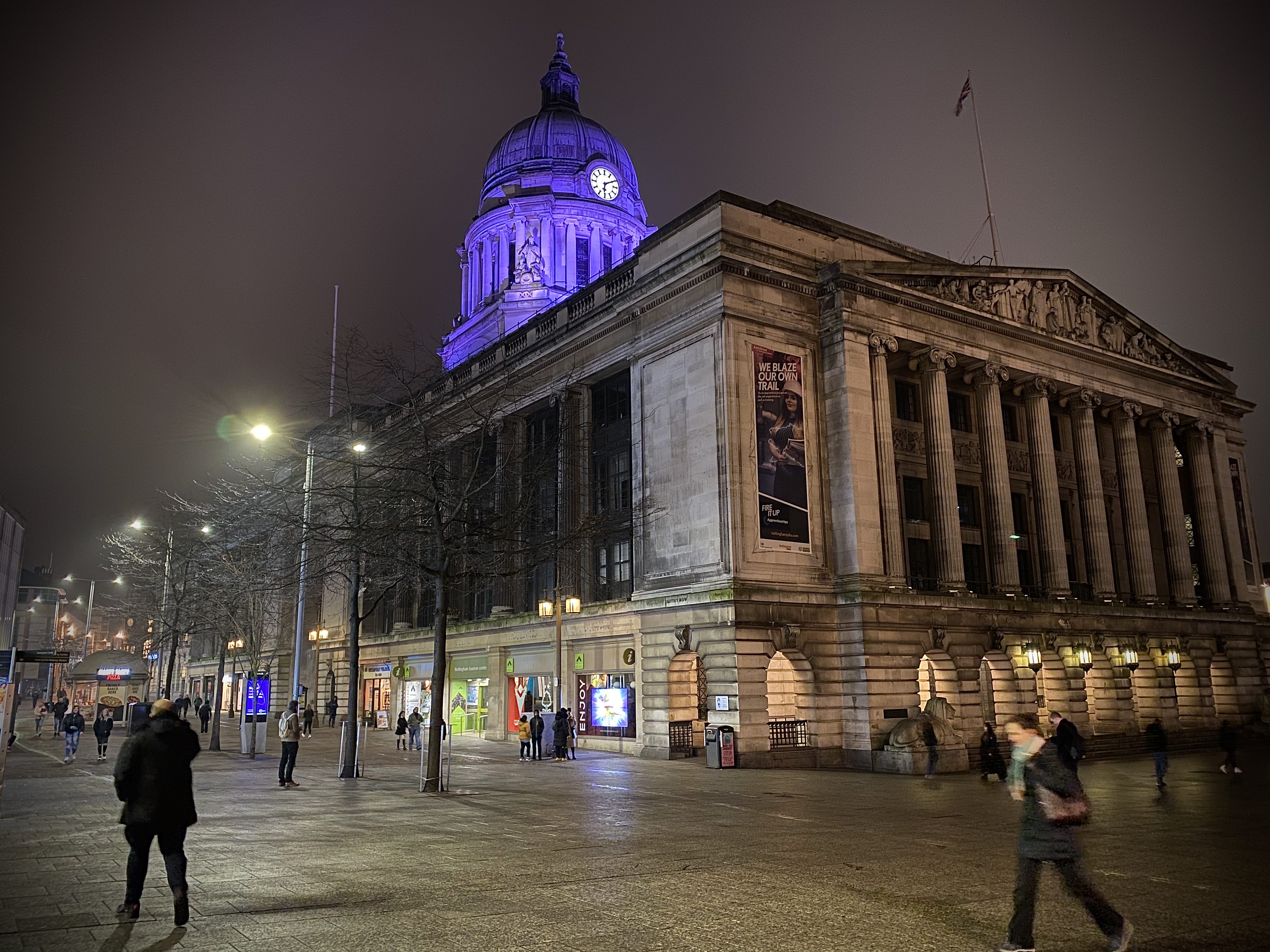
TL;DR: Well, yet another edition of New Adventures came to a close and my brain is still bubbling with the insights, thought provoking ideas and personal experiences this years speakers shared with us.
I’ve been wanting to share my thoughts about New Adventures Conference 2020 ever since I returned home two weeks ago, but life has this ability to side track you and go on.
A lot of good coverage (slide decks incl.) has been published since, and I don’t want to paraphrase what has already been written, or just post my raw conference notes, so I’ll try to summarise my overall feelings and what I took away from this exceptional event.
I’ve attended every edition of New Adventures since its inception, and it has become my favourite webdesign forward looking event. It slowly shifted from an event that provided me with new tools or technics to adopt or try out, to one that inspires and strengthens my convictions.
This year’s edition picked up right where last year left off. Jeremy Keith and Ethan Marcotte’s keynotes were among the most moving, close to home and inspiring talks I have ever had the chance of following. There was a strong feeling of commitment and unity that ran deep through the attendees.

This year’s speakers delivered intense, provocative and deeply humane talks that covered topics from futures design and climate change, to moving forward, breaking down choices, asking yourself if you are doing the right thing, inclusivity, technological colonialism, wow.
Be inclusive, consider climate change as an era, make radical choices whenever possible, map your feelings by writing them down, someone’s utopia is someone else’s dystopia, inclusion beats empathy, we win or loose together, radical is close to home. Build for resilience.
Cennydd Bowles (@cennyd) delivered a powerful future looking talk explaining how the gap between productivity and compensation is growing, more and more wealth get accumulated in the hands of fewer and fewer people. The system isn’t working as advertised, and we’re seeing a drop in the faith in democracy around the world.
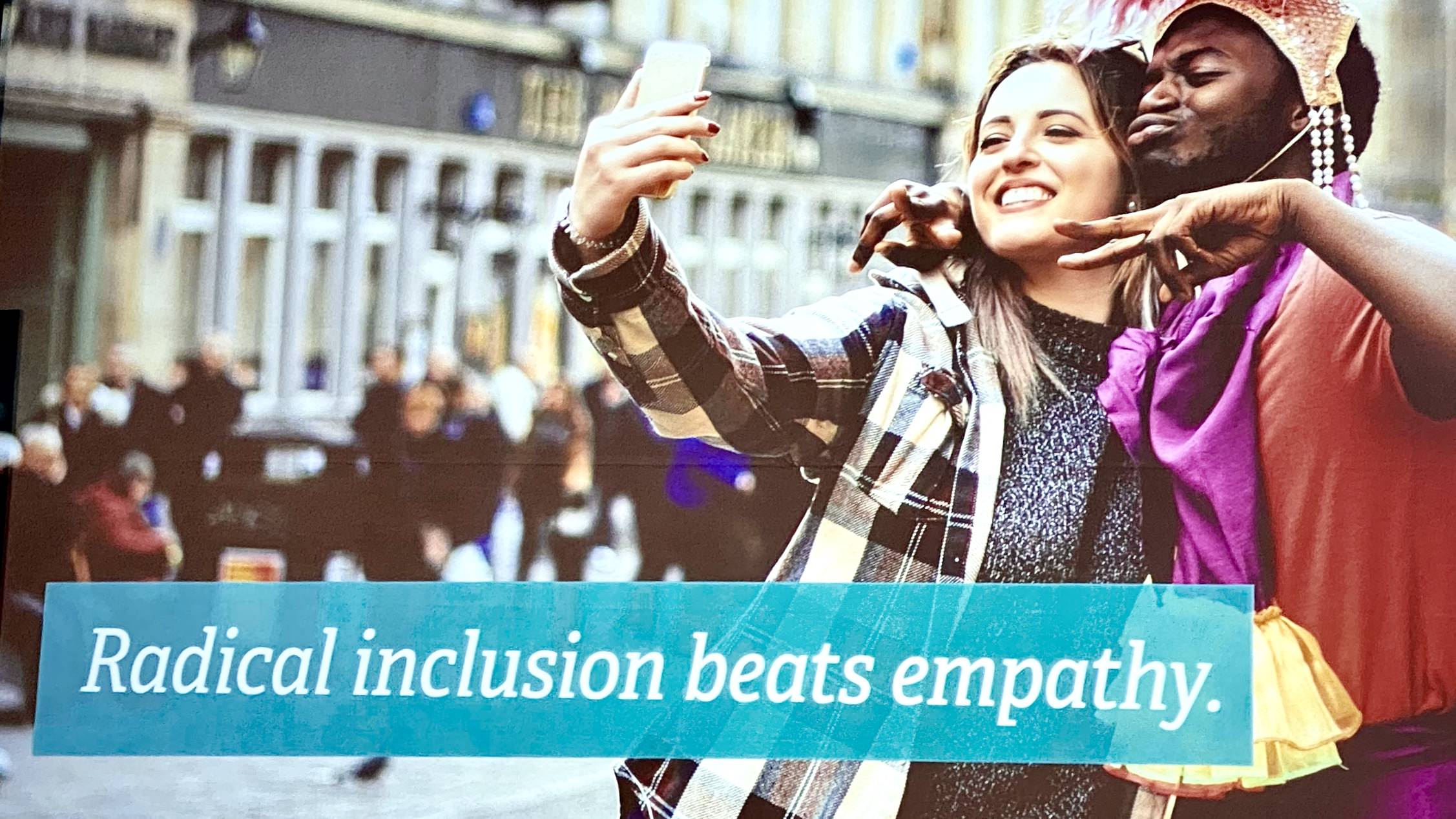
Things can’t carry on the way that they’re going[…] the power of wealth is now reaching levels that we haven’t seen since the first world war. Money earns money faster than work earns money.
We’re not sure how AI will change the world, and while they will be some positive impacts, there will also be some guaranteed economic and political consequences of this shift as well. Automatisation isn’t new, but we are entering a stage of cognitive automatisation for which we have no idea what the outcomes will be. AI will penetrate more and more the workforce, whatever the status.
Climate crisis is no longer an issue, it’s an era. It’s a backdrop for all possible futures, exacerbating every existing injustice in our world, poverty, natural disasters, oppression, war.
Cennydd talked about the need to shift from a user-centered design approach, which helps to consume more needless products in the name of progress and choice, to more of a system-centered approach, encompassing the long term impacts our design decisions.
According to Cennydd, our UC view of the world has two main blindspots :
The time horizon of interaction design. We need to think beyond the timespan of a user. It is rare that we consider the longer term (months, years or decades) and the unintended consequences that might hide in our choices.
We need to design with other people in the room, not only in mind. Offering more people, more actors a stake in those futures.
I was blown away by Akil Benjamin (@akilbenjamin) talk. Be radical whenever you can. Break down your choices, ask yourself if you are doing the right thing by testing whenever you can, and change. Map your feelings, and remember them contextually and build on it next time. It felt good to hear this.
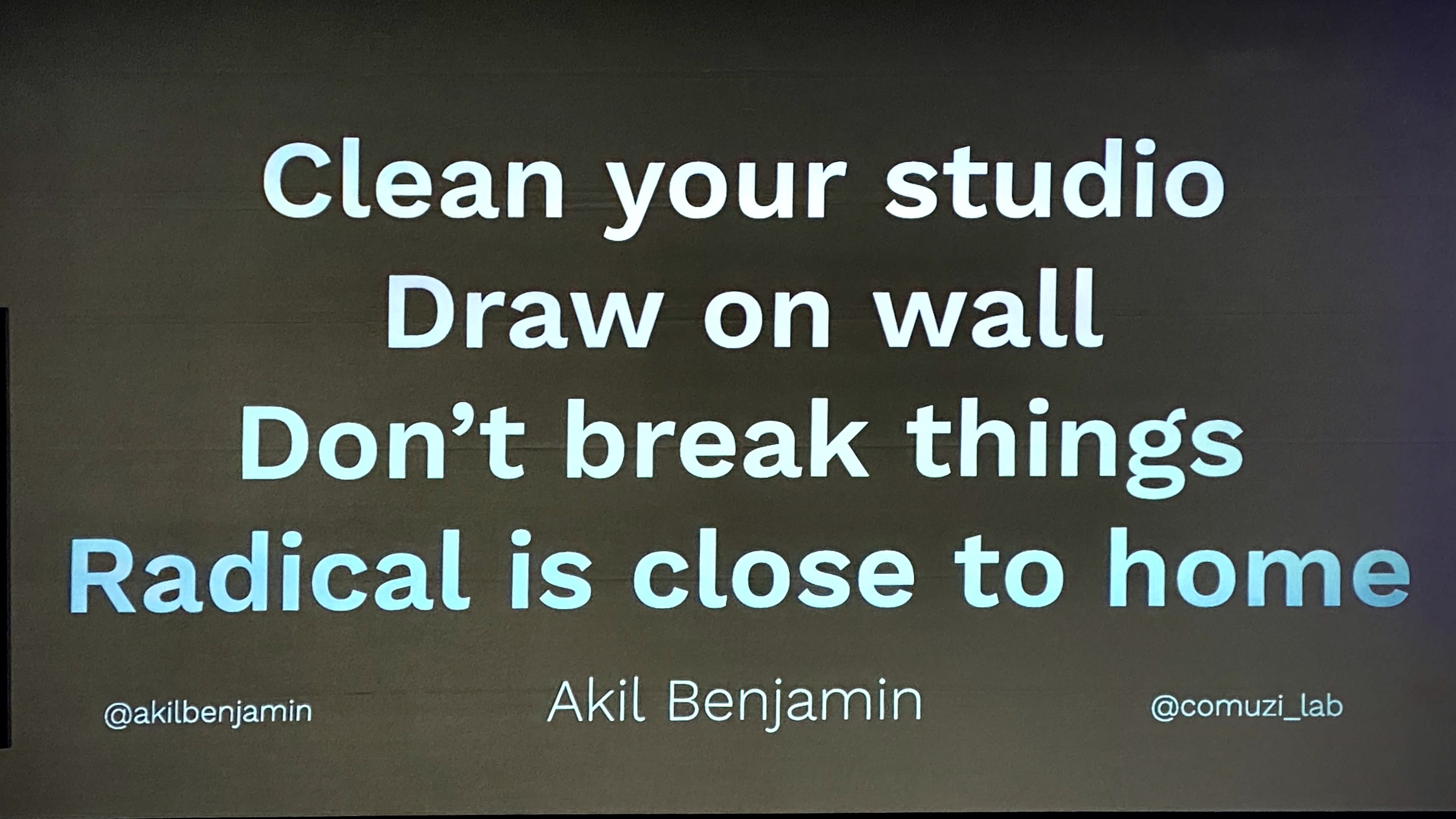
Do no harm, trumps do no evil. Radical is close to home.
Natalie Kane (@nd_kane) manages the V&A Digital Design Collection and walked us though what it means to curate a digital design collection. I love this kind of project and the challenges it poses. Natalie presented different acquisitions they made, from the iPhone 6 (that can’t be turned on anymore, for risking to brick it), the Minitel that connects to nothing (all disappeared when the last servers were shutdown) or the WeChat platform. Fascinating.

Digital design works between the physical and the digital between the concrete and the abstract and they often has no immediate edges or boundaries it can exist. Across a number of different scales, from the personal to the planetary.
The afternoon sessions started with Liz Jackson (@elizejackson) who presented Thisten, a real time speech-to-text app I had the opportunity to test throughout the day. Aside from the accessibility benefits it provides, it was liberating to know I could dive back into the Thisten feed at any time to copy & paste a citation, or figure out something I didn’t grasp. Liz’s talk (“Productivity recreates disability”) was a real eye opener for me, it really got me redefining inclusivity, and how my approach to design can impact others, start designing a solution with the user, instead of for the user.
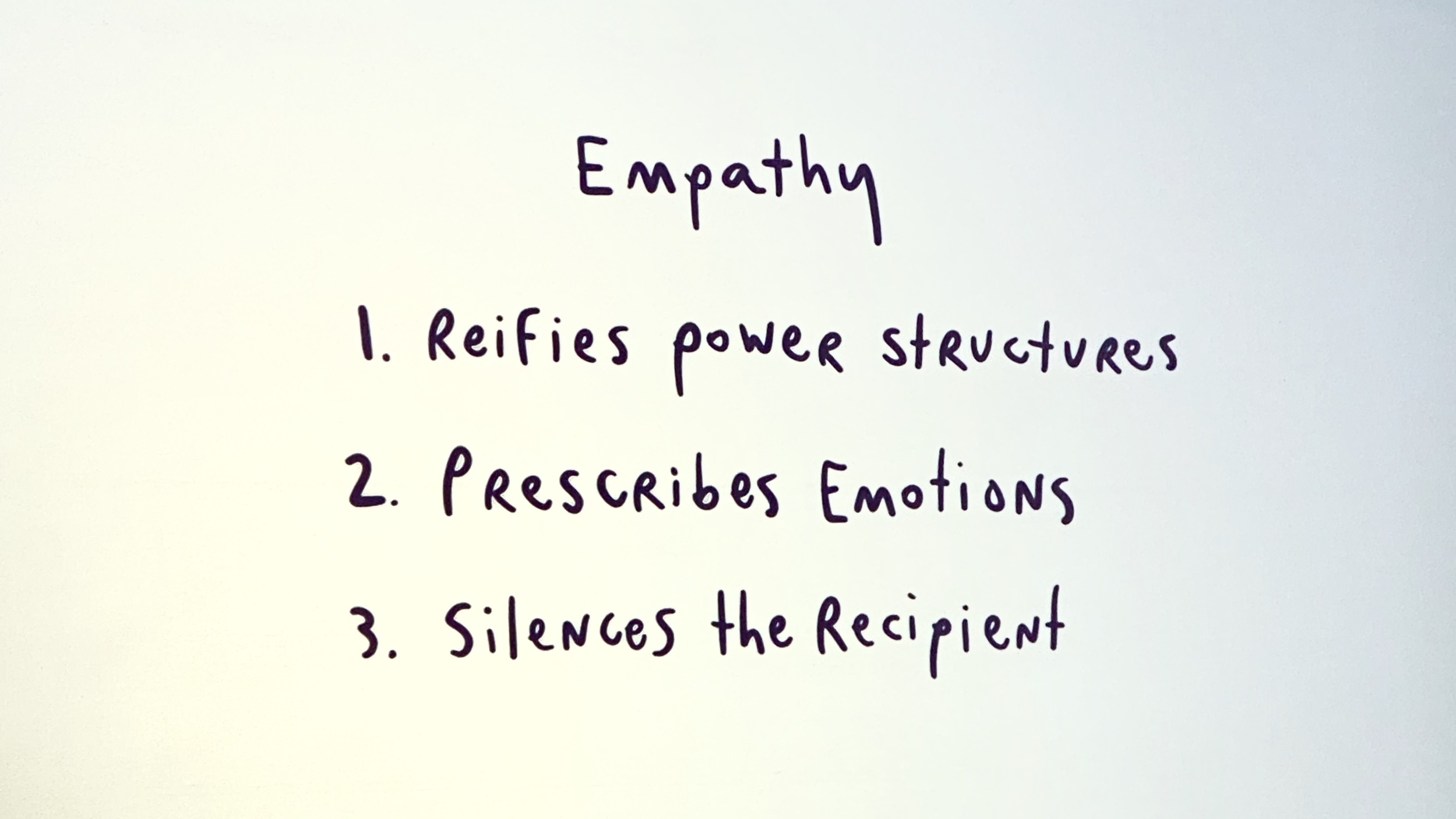
Empathy reifies power structures, prescribes emotions and silences the recipient
The word empathy is just over 100 years old and shifted from inspiration to pity.
Lack of respect for disabled people. Maker them part of the team. Design with rather than for.
Laura Kalbag (@laurakalbag) has been delivering talks on global tracking and privacy for over seven years now, and she is still as powerful and insightful when she presents the state of surveillance capitalism and our privacy, and the extend to which Google gathers data from popular websites.
Laura gave a crystal clear presentation of the state of tracking and surveillance through carefully select examples, and gave a number of tips to mitigate as best we can tracking and fingerprinting versus convenience, and to protect ourselves as individuals.
![The age of surveillance capitalism unilaterally claims human experience as free raw material for translation into behavioural data [which] are declared as a proprietary behavioural surplus, fed into advanced manufacturing processes known as ‘machine intelligence’, and fabricated into prediction products that anticipate what you will do now, soon, and later](https://davidroessli.com/perch/resources/blog/img1564.jpeg)
Convenient exploitative technology is like fluffy handcuffs. They make looks cute and fluffy, but they are still handcuffs.
Avoid technological colonialism. We should not be making assumptions about what is suitable for an audience that we are not part of.
Use small technology. Free and open.
We have to remember that if we work together, we can have a huge impact. Be the advocate of marginalised folks, be the gatekeeper when advocacy doesn’t get you far enough, use your expertise to prevent exploitative things from happening.
Florence Okoye (@FINOkoye) looking under the hood and understanding how things work. If we care about the future that we are creating, it’s important that we think about the dynamics of this creation. Understand why we are making the stuff we are making, and what it is that we are making.

We are still making a bunch of exploitative crap, dependant on environmentally destructive infrastructure and economic paradigms.
Things are complex, design is complex, and we can’t just burn everything down as it would hurt a lot of people.
Breaking things down into their constituent components. Take the time and the space to actually communicate how we feel.
Tatiana Mac (@TatianaTMac) gave an amazing talk using the history of booleans (mathematical binary) as a red line. Life if rich and diverse, and must be considered as a spectrum, a gradient. It was provoking and intense, and again, resonated deeply within me.
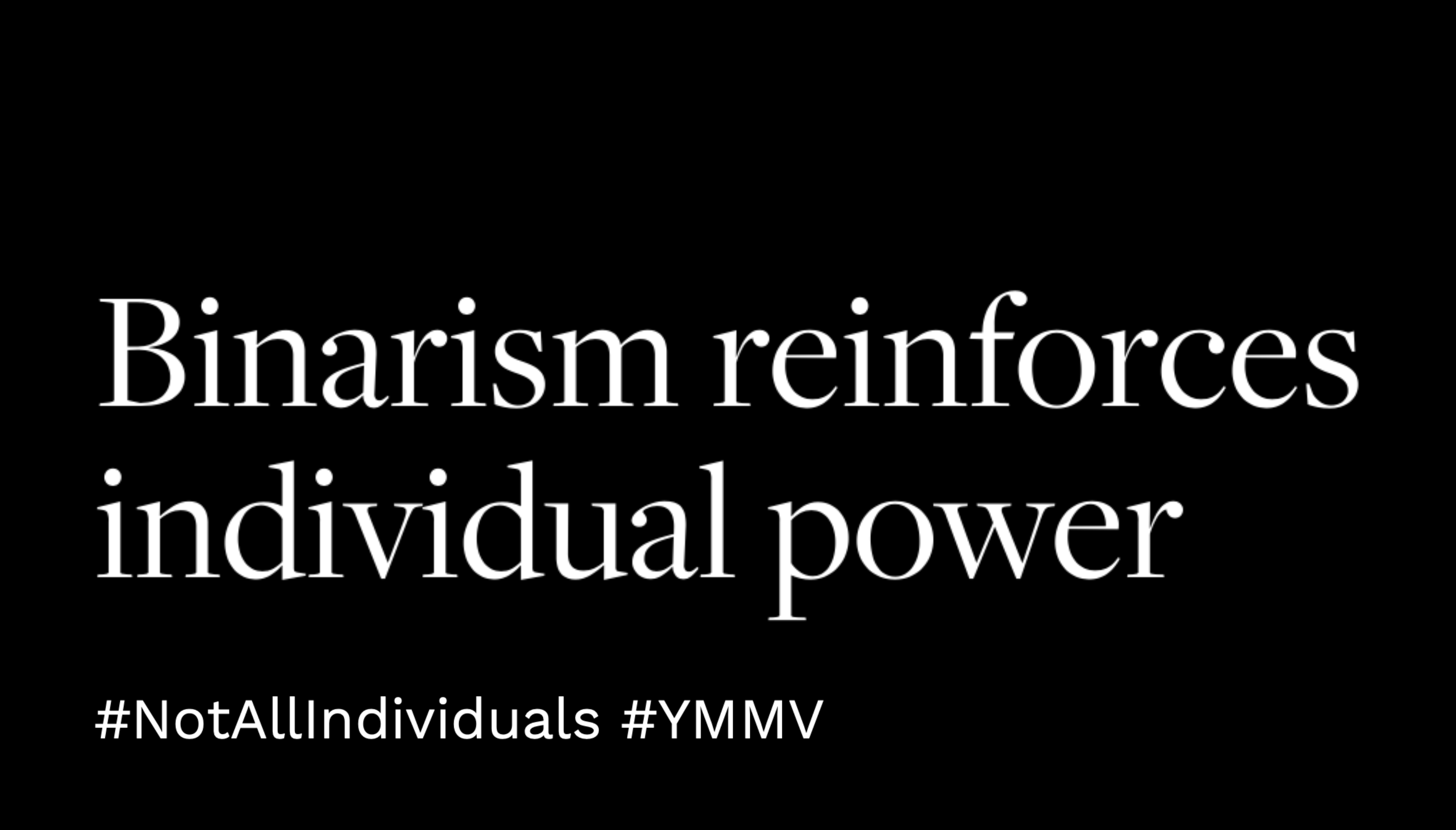
Resistance must be resilient and when we create technology, let’s stop creating it for efficiency. Let’s create it for resilience, because resilience is what allows us humans to live another day.
This year’s speaker lineup was one of a kind. I was moved by their commitment and intensity. By mid-afternoon I gave up live tweeting, having so much to take in. My brain was bubbling, and still is…
Both the morning and afternoon sessions were closed by a live recording of Jeff Veen’s Presentable podcast with the speakers. Answering questions from the audience, it was a nice way to recap what was presented.
Check out the videos when they become available, and in the meatime, browse through the slide decks and excellent coverage of the conference.
Comments and responses
13 Feb 2020